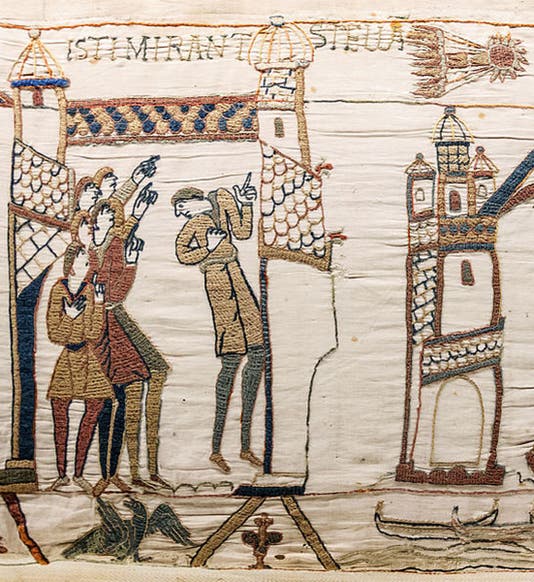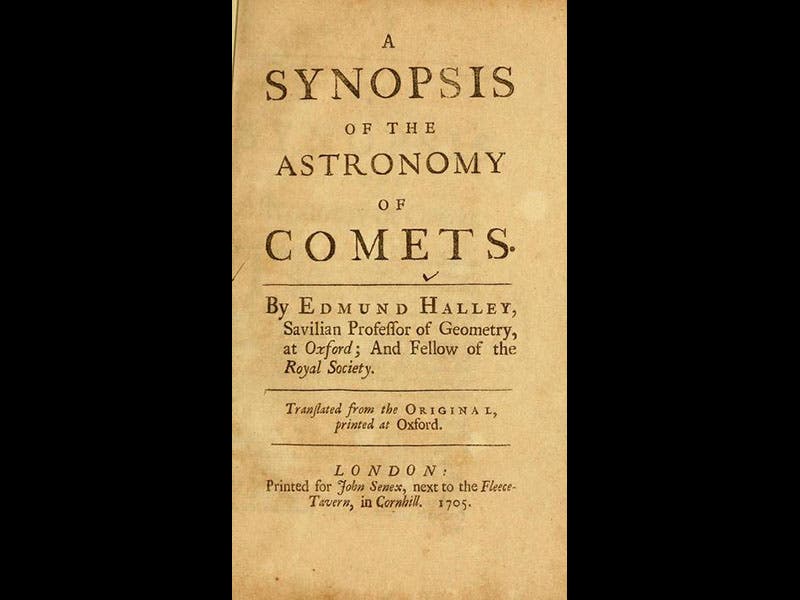Scientist of the Day - Edmond Halley
Edmond Halley, an English astronomer, was born Nov. 8, 1656. Surprisingly, we have never celebrated Halley’s birthday in this series. Halley made many contributions to science: mapping the southern skies, studying terrestrial magnetism, discovering the proper motion of stars, but today we celebrate the achievement with which his name is indelibly linked—discovering the periodic nature of comets, and predicting the return of the comet of 1682, now known colloquially as Halley’s comet, and more properly as Comet Halley.
Halley observed that the comet of 1535 had traced a path through the heavens that was very similar to that of the comets of 1607 and 1682. Might it be that this was one comet, returning ever 76 or so years? In a publication of 1705, A Synopsis of the Astronomy of Comets, Halley predicted that the comet of 1535, 1607, and 1682 would return in 1758 (second image). When the comet did reappear, in December of 1758, 53 years after Halley's prediction and 16 years after his death, the astronomical world stood up and applauded, since this was the most dramatic public demonstration to date of the predictive power of Newtonian science.
Comet Halley has returned three times since, in 1835, 1911, and 1986, and is next due back in 2061. There are not nearly as many pictorial records as there should be of past visits of Comet Halley; we see above a fairly undramatic photograph of the near approach of 1910 (third image). But two early appearances have spectacular visual records. Comet Halley appeared in 1066, when William the Conqueror was invading England, and the Bayeux tapestry has this appearance woven into its historical record (first image). And in 1305, painting a Visitation of the Magi for the Scrovegni Chapel in Padua, Giotto chose to substitute the comet for the Star of Bethlehem (fourth image).
There are many portraits of Halley in the National Portrait Gallery in London. This one (fifth image), by Richard Phillips, painted in 1722, is the one most widely reproduced. We do not own Halley’s Synopsis; the copy shown is in the Smithsonian Institution Libraries.
Dr. William B. Ashworth, Jr., Consultant for the History of Science, Linda Hall Library and Associate Professor, Department of History, University of Missouri-Kansas City. Comments or corrections are welcome; please direct to ashworthw@umkc.edu.











